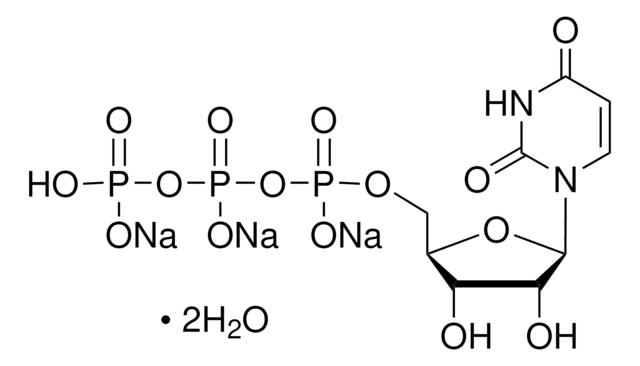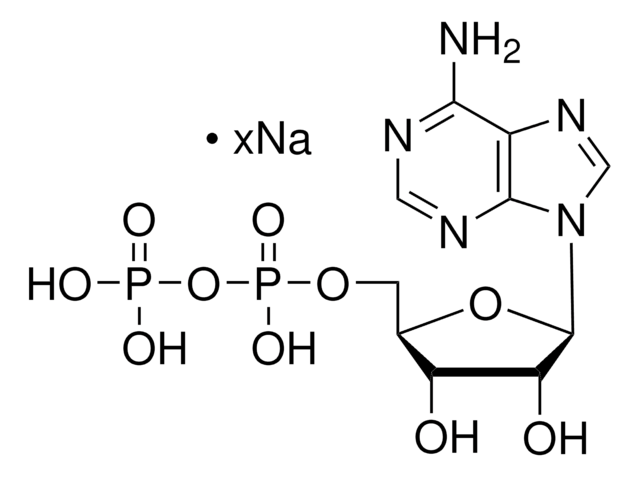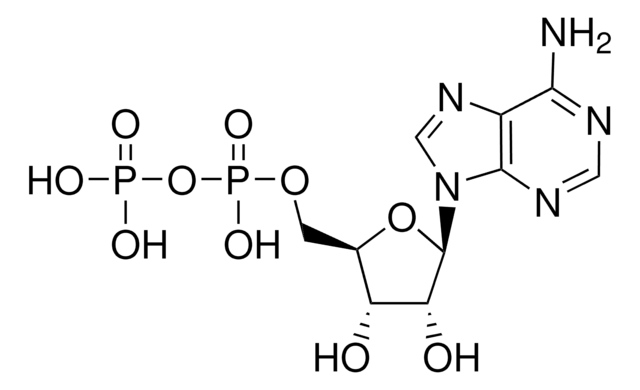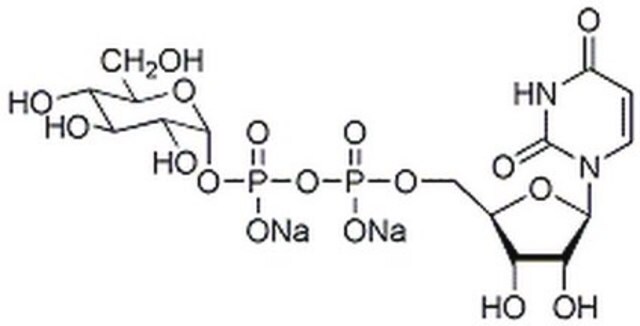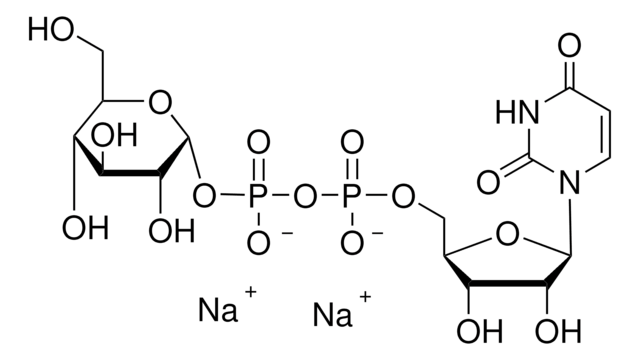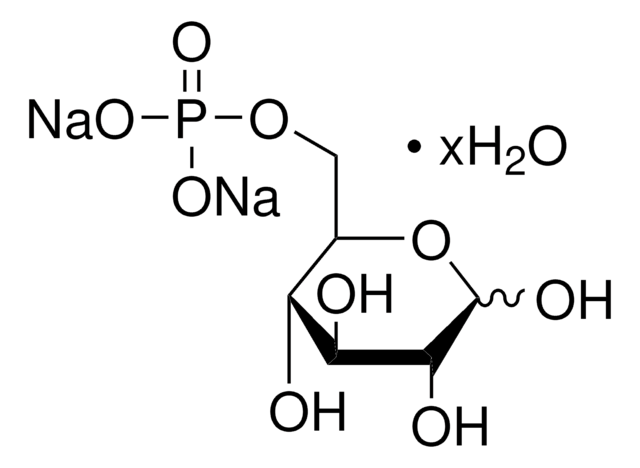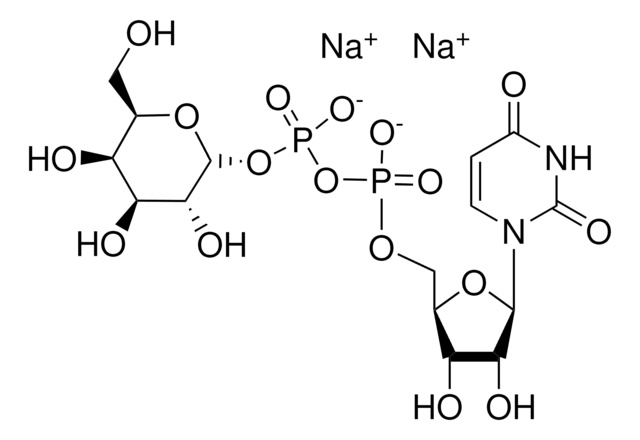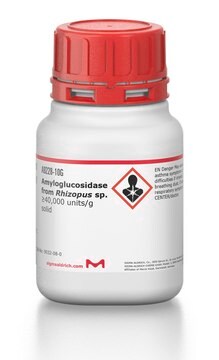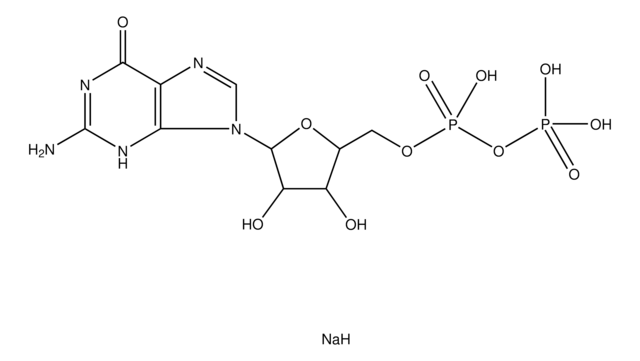U4125
Uridine 5′-(trihydrogen diphosphate) sodium salt from Saccharomyces cerevisiae
95-100%
Synonym(s):
UDP sodium salt, Uridine 5′-(trihydrogen pyrophosphate) sodium salt
About This Item
Recommended Products
Assay
95-100%
solubility
H2O: soluble 100 mg/mL, clear, colorless to very faintly yellow
storage temp.
−20°C
SMILES string
[Na+].[Na+].[Na+].O[C@H]1[C@@H](O)[C@@H](O[C@@H]1COP([O-])(=O)OP([O-])([O-])=O)N2C=CC(=O)NC2=O
InChI
1S/C9H14N2O12P2.3Na/c12-5-1-2-11(9(15)10-5)8-7(14)6(13)4(22-8)3-21-25(19,20)23-24(16,17)18;;;/h1-2,4,6-8,13-14H,3H2,(H,19,20)(H,10,12,15)(H2,16,17,18);;;/q;3*+1/p-3
InChI key
GFASEGWJDXDCKZ-UHFFFAOYSA-K
Gene Information
human ... LPAR4(2846) , LTB4R(1241) , P2RY1(5028) , P2RY10(27334) , P2RY11(5032) , P2RY12(64805) , P2RY13(53829) , P2RY14(9934) , P2RY2(5029) , P2RY4(5030) , P2RY5(10161) , P2RY6(5031) , P2RY8(286530)
Related Categories
Application
Biochem/physiol Actions
Features and Benefits
Preparation Note
Signal Word
Warning
Hazard Statements
Precautionary Statements
Hazard Classifications
STOT SE 2
Target Organs
Eyes,Central nervous system
Storage Class Code
11 - Combustible Solids
WGK
WGK 3
Flash Point(F)
Not applicable
Flash Point(C)
Not applicable
Certificates of Analysis (COA)
Search for Certificates of Analysis (COA) by entering the products Lot/Batch Number. Lot and Batch Numbers can be found on a product’s label following the words ‘Lot’ or ‘Batch’.
Already Own This Product?
Find documentation for the products that you have recently purchased in the Document Library.
Customers Also Viewed
Protocols
ZIC-cHILIC is a densely bonded zwitterionic stationary phase with phosphorylcholine functional groups covalently attached to silica.
HILIC separation is an alternative that permits sensitive MS detection and without the use of ion-pair reagents.
Our team of scientists has experience in all areas of research including Life Science, Material Science, Chemical Synthesis, Chromatography, Analytical and many others.
Contact Technical Service



